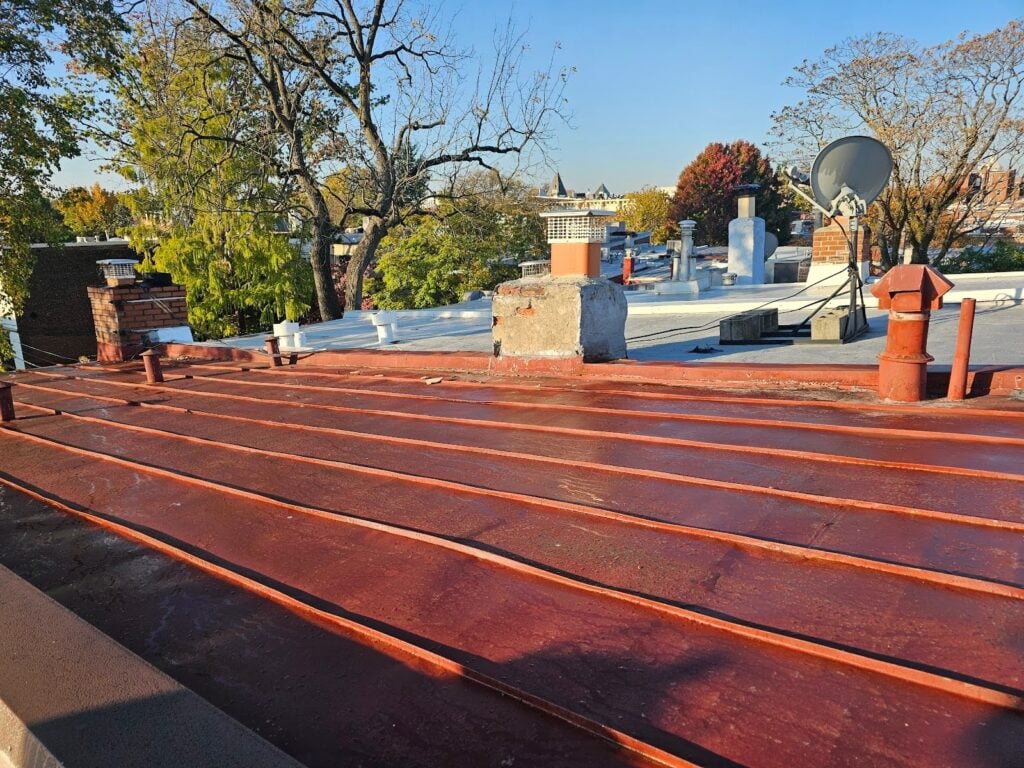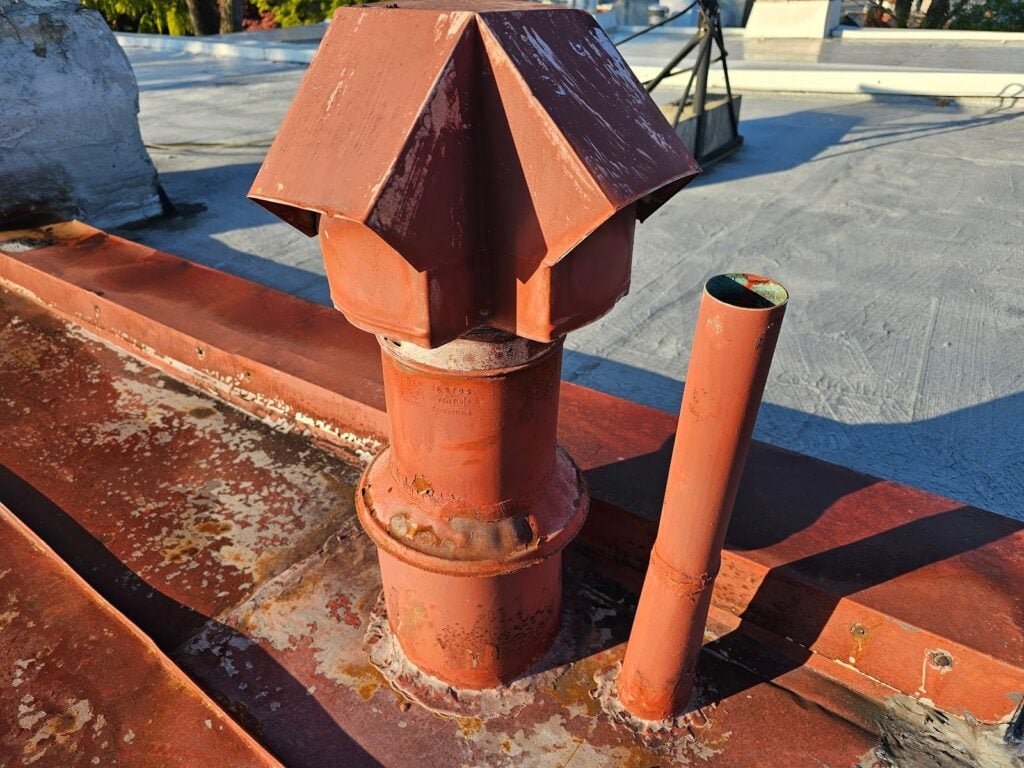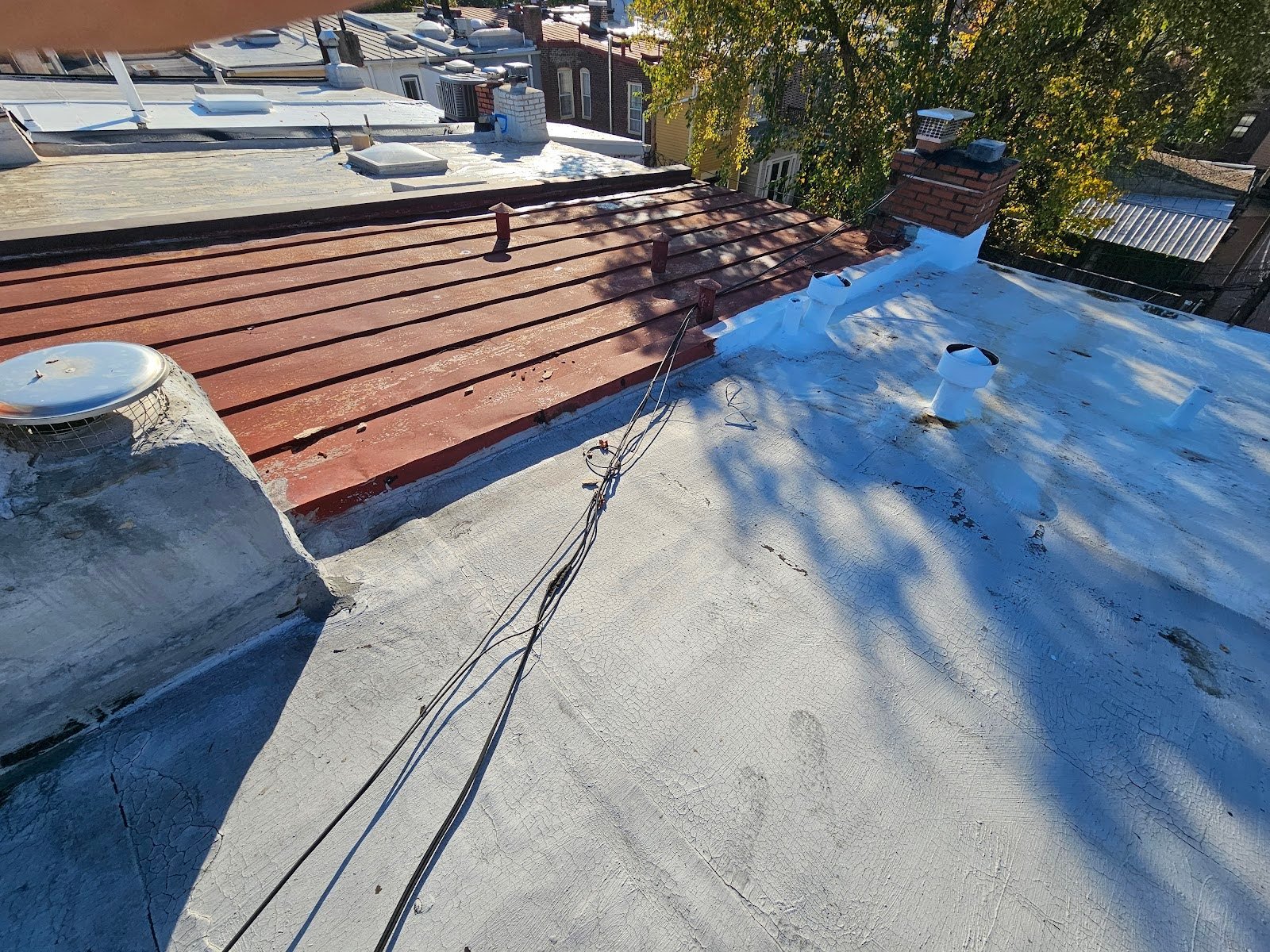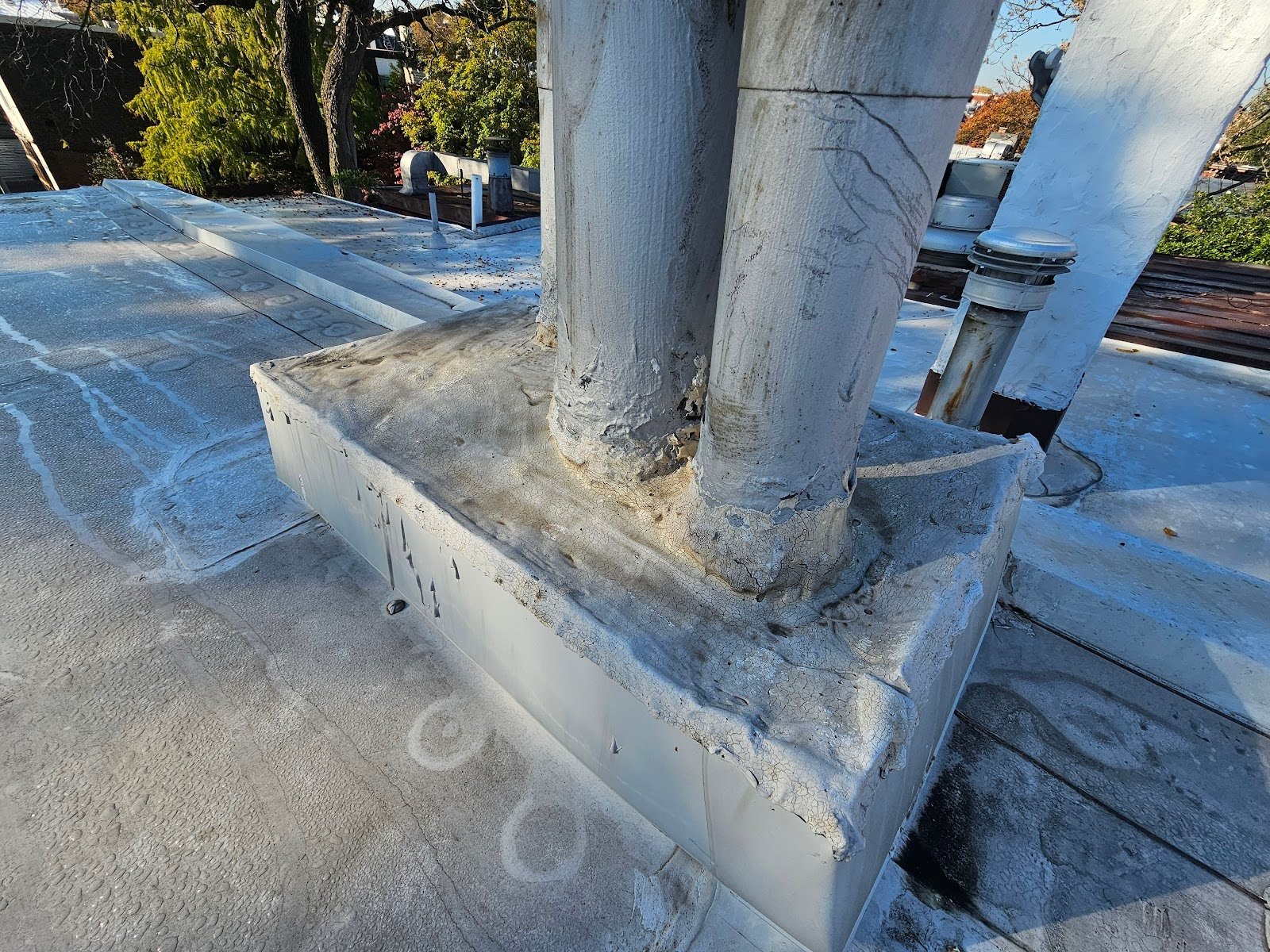Standing Seam Roof Penetrations – Part I: Critical Challenges and Proven Solutions
Today, we’re looking at a standing seam roof. Standing seam roofs are one of the many different types of roof membranes used here, at flat or low slope roofs, in Washington DC. There’s a wide range of different roof types and standing seams are one of the few types that were used both in historic times and still relatively widely available today. Some other roof types, used 100 or so years ago are no longer common or available. One of those less common, today, other types of roof is built-up roofs. Built-up roofs are generally made with several layers of roll type felts, set into a hot mop application of tar.
Generally several of these layers will be installed in succession. And although the tar will hold one layer to the next, these roots are often considered or called “loose laid” because they don’t have mechanical or even strong adhesive attachment to the wood deck substrate below. Often, with built up roots, the roof membrane, created with several layers, will be secured or held in place with a massive amount of gravel. Often the gravel is called a ballast. Sometimes it’s also called an aggregate which is another name for crushed stone. By comparison, metal roofs are installed without a crushed stone aggregate or ballast on top.
Therefore, standing seam metal roofs, for example, are much lighter than historic alternative of built up roof systems. Standing seam roofs like this, by comparison, in historic times, were also able to be built or installed more quickly.

As we mentioned, standing seam metal roofs like this have an advantage because they are much lighter weight, and therefore have a comparative lower cost of shipping, transport, and installation. However standing seam metal roofs require a different level of skill than built-up roofs, for example.
These aren’t the only two types of roofs available today, but in historic times they were two of the main types used, particularly here in Washington DC. Today, we have a wide range of synthetic materials that are used in lieu of these historic types of roofing systems. These modern materials generally have options such as lightweight membranes that are compatible with recovery boards or insulation boards below and can be installed in a fully adhered methodology.
The modern membranes also can be installed with flat seams and in some cases with seams that have a much greater distance because of the larger width of the roll materials. Fewer seams is better, generally it is characteristic of higher performance. It means less joining between concentrically laid or successive installations of roofing membrane. Generally, seams are one of the weak links in the chain or path of a roof system and by designing a roof system to have less seams, it translates to fewer weak links in the roof.

Today, we’re looking at penetrations through a standing seam metal roof. You can see examples of these penetrations in the pictures above and below. Penetrations through a roof are items that are cut or passed through the roof membrane. These items need to be sealed very well to avoid leakage. Penetrations are generally a relatively wide range of items because they can include parts of a plumbing system, electrical system, HVAC elements, and many other types of things used in a building that have to go through a roof membrane.
The sealing of penetrations and these multiple different types of elements is extremely important and a high source of leakage in roof systems, particularly when individual trade contractors come and make their penetrations or holes through the roof after the roofing contractor has completed their work. We strongly recommend that any penetrations or work done on top of a roof be done in coordination with the roofing contractor because otherwise, it’s common for the other trades not to take a serious approach to working on a roof system.
When other trades make their penetrations or holes through a roof, they often do not seal the areas very well. And even for low quality roof contractors, creating proper seals around penetrations, with flashing, or by other means, is not something that is easy for them. We work on many different roofs around the city of Washington DC and find that other contractors often struggle with doing this type of detail, sealing roof penetrations properly,

In this coming weeks blog article, we will look at several other examples of roof penetrations through standing seam metal roof systems.
We provide this information here on our blog, and our website, to help our customers and future clients, and we recommend every building owner in DC who values the longevity of their roof (and their investments) and building use a contractor who values the simple and important principles of proper roof construction like Dupont Roofing DC. Our company specializes in flat roofing here in Washington DC and we’re happy to help building owners of almost all types.
Learn more about our company and the proper techniques of working with roofing on historic buildings in Washington DC here on our blog at DupontRoofingDC.com, and you can call us at (202) 840-8698 and email us at dupontroofingdc@gmail.com. We are happy to help and at least talk through options.




